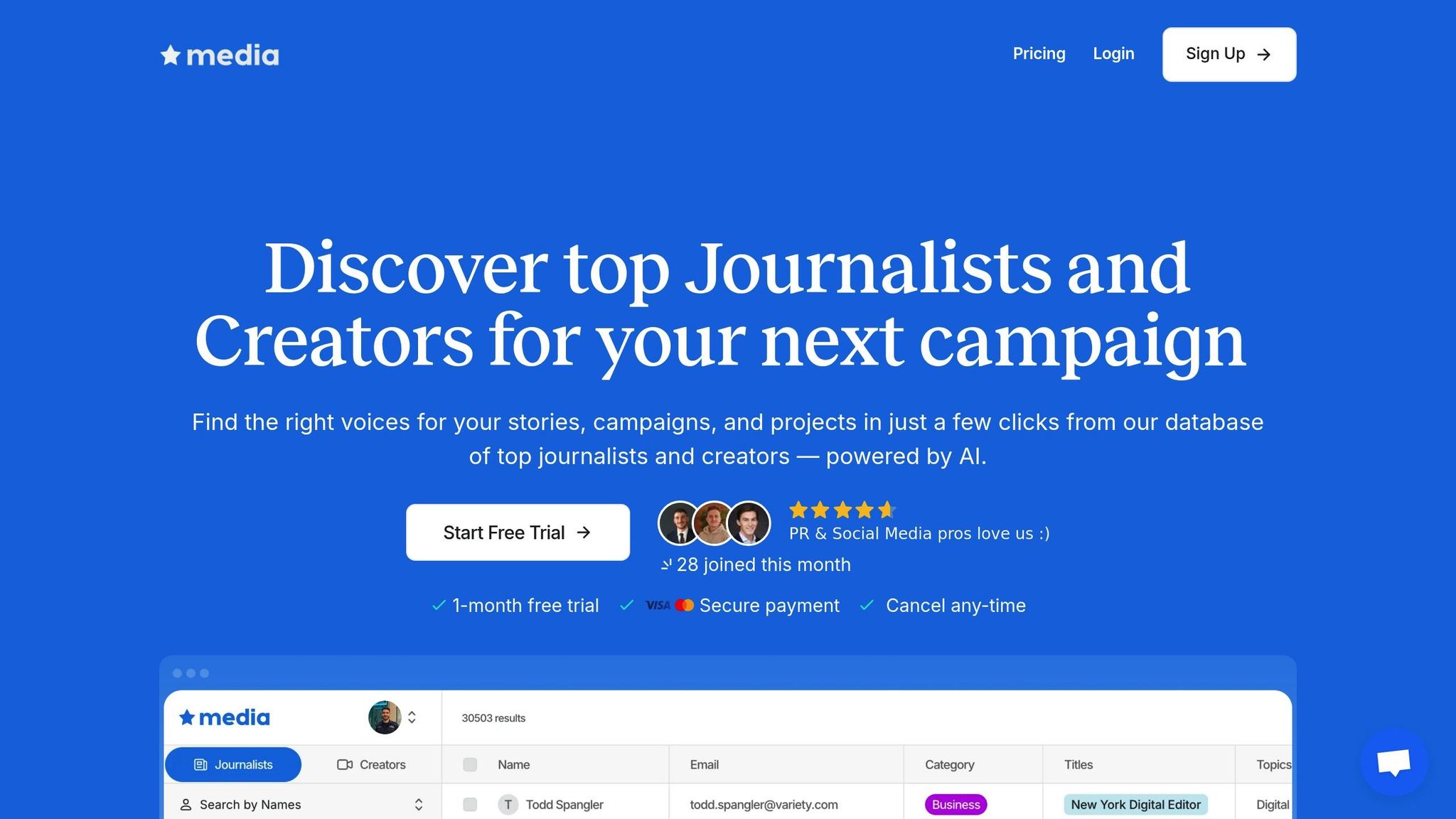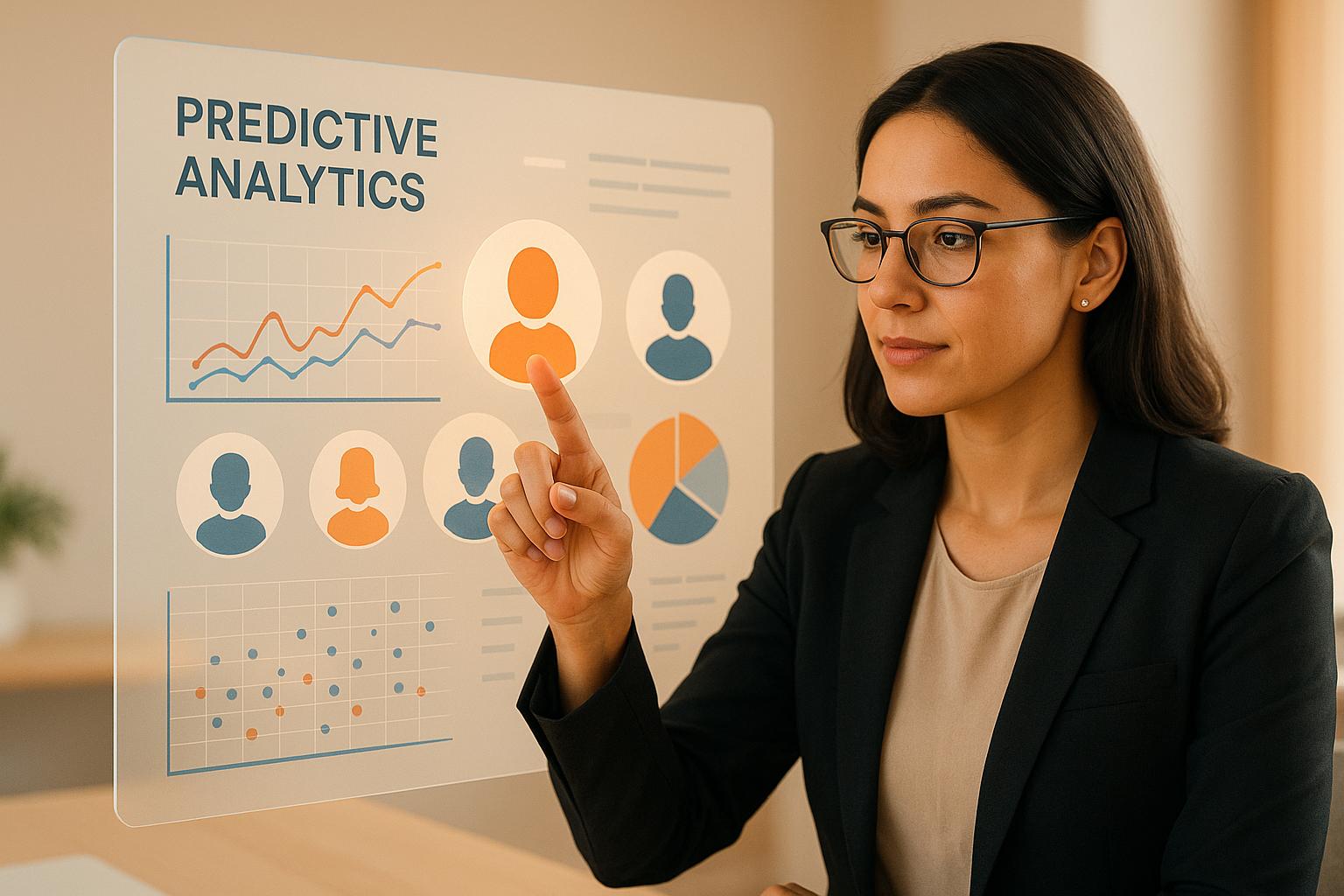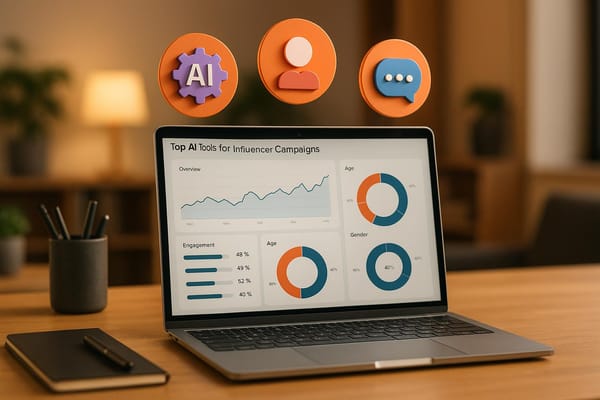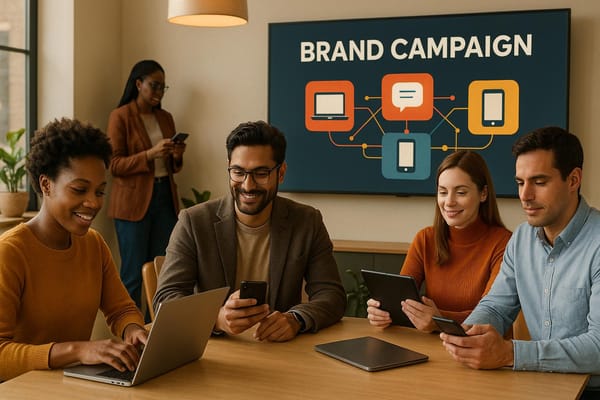Influencers' Role in Brand Community Growth
Explore how influencers drive brand community growth through trust, engagement, and authentic connections, enhancing long-term success.

Building a strong brand community is challenging but crucial for long-term success. Influencers can bridge the gap between brands and audiences by fostering trust, creating engaging content, and driving meaningful interactions. Here's how they help:
- Trust: Influencers serve as credible voices, making brand messages feel more relatable.
- Engagement: Through polls, Q&A sessions, and live streams, influencers spark conversations and keep audiences active.
- Content Variety: Influencers add fresh perspectives that resonate with diverse audience segments.
- Niche Connections: Micro and nano-influencers engage highly focused audiences, often outperforming larger influencers in specific niches.
Brands can maximize these benefits by leveraging strategies like social media takeovers, collaborative content, and user-generated content campaigns. Tools like Media AI simplify influencer discovery and campaign management, making it easier to build genuine connections and scale efforts effectively.
Ultimately, combining influencer-driven and brand-led approaches can create a thriving, engaged community while ensuring alignment with brand values.
Ask an Influencer: Why is Brand Community Important?
How Influencers Boost Community Engagement
When brands team up with influencers, they tap into a powerful way to connect with audiences beyond just promoting products. Influencers have a knack for sparking meaningful interactions that turn passive followers into active participants - people who engage, share, and even advocate for the brand.
Building Trust Through Influencer Partnerships
At the heart of any thriving community is trust, and influencers act as a bridge between brands and their audiences. Unlike traditional ads, influencer collaborations feel more like friendly recommendations than sales pitches.
When influencers share their personal experiences with a product or service, they’re putting their reputation on the line. This accountability resonates with followers, making them more likely to trust the recommendation.
Honesty is key here. Influencers who openly discuss both the pros and cons of products or show behind-the-scenes glimpses of their brand partnerships create stronger bonds with their audience. This transparency not only builds trust but also encourages followers to engage with the brand in a more meaningful way.
Influencers also bring a personal touch that makes brands feel more relatable. For example, when an influencer shares how a fitness app helped them through a tough time or how a skincare product boosted their confidence, it creates an emotional connection. These kinds of stories spark conversations, encouraging followers to share their own experiences. This trust and relatability set the stage for vibrant, discussion-driven communities.
Creating Conversations and Engagement
Influencers are naturally skilled at starting conversations. Their content doesn’t just inform - it invites participation. This ability is invaluable for brands looking to build active and engaged communities.
Interactive content is one of their strengths. Influencers know how to use tools like polls, Q&A sessions, live streams, and story features to get followers involved. For example, when an influencer asks their audience to share their experiences with a product or vote on their favorite features, they create multiple opportunities for interaction.
Another key factor is real-time engagement. Influencers often reply to comments, answer questions, and highlight user-generated content. This level of responsiveness keeps the conversation alive and sets a standard for engagement that followers come to expect, even on the brand’s own channels.
Influencers also excel at creating shareable moments. Whether it’s a funny video, a heartfelt story, or a creative product showcase, their content often inspires followers to repost, tag friends, or reference it in their own posts. These moments extend the brand’s reach organically, sparking broader conversations and drawing new people into the community.
The Growth of Niche Influencers
While big-name influencers might grab headlines, smaller, niche influencers are proving to be just as valuable - if not more so - when it comes to building deeper community connections. Micro and nano-influencers (those with 1,000 to 100,000 followers) are becoming increasingly important for brands looking to engage specific audiences.
These influencers bring specialized knowledge that resonates deeply with their followers. For instance, a plant care influencer with 15,000 followers might drive more meaningful engagement for a gardening brand than a general lifestyle influencer with half a million followers. Their audiences are highly focused and genuinely interested in the niche topics they cover.
Working with multiple smaller influencers is also a smart and cost-effective strategy. Instead of investing in one big partnership, brands can collaborate with several niche influencers to connect with different segments of their audience. This approach not only diversifies community-building efforts but also creates multiple touchpoints for engagement.
The smaller, more intimate nature of these influencer communities fosters stronger connections among followers. Many of them already know each other and interact regularly, which helps create instant dynamics around the brand. When these tight-knit groups engage with branded content, they bring their existing relationships and conversations along, enriching the overall community experience.
Proven Strategies for Working with Influencers
Now that we’ve covered how influencers can boost engagement, let’s dive into specific strategies brands can use to build stronger communities. These approaches go beyond simple product placements, focusing instead on creating meaningful connections and fostering long-term growth.
Social Media Takeovers
Social media takeovers allow influencers to temporarily manage a brand’s social media channels, bringing their unique personality and style to the platform. This collaboration blends the influencer’s voice with the brand’s identity, creating an engaging experience for both audiences.
The key to a successful takeover lies in balancing creative freedom with brand guidelines. When influencers feel at ease and can express themselves authentically, their content resonates more deeply with followers. This authenticity is what makes takeovers such a powerful tool for community building.
Behind-the-scenes content - like a glimpse into an influencer’s daily routine or creative process - can make the experience feel personal and exclusive. This type of content invites followers to interact through comments, questions, and shares, fostering a sense of connection.
Live takeovers take engagement to the next level. By hosting live sessions on a brand’s account, influencers can interact directly with the audience, answering questions and responding to comments in real-time. These spontaneous, unscripted moments often spark the most activity, as they feel genuine and immediate.
Timing is everything with takeovers. A 24-hour takeover strikes the right balance, generating urgency without disrupting the brand’s regular content flow. Announcing the event ahead of time builds excitement, and promoting it across both the brand’s and influencer’s channels ensures maximum visibility.
After the takeover, brands can strengthen these connections even further through collaborative content creation.
Creating Content Together
Collaborative content brings together the brand’s vision and the influencer’s creativity to produce highly engaging material. This approach works best when both parties contribute their unique strengths to the project.
Co-creating tutorials, challenges, or storytelling content combines professional polish with a personal touch. Followers often feel more connected when they see the collaboration unfold, making the final product even more impactful.
Collaborations that extend to product development can feel especially authentic. When influencers are involved in designing or improving products, they become genuine advocates, able to share firsthand insights about the process.
Cross-platform strategies amplify the reach of collaborative efforts. Instead of limiting content to one platform, brands and influencers can adapt the same message across Instagram, TikTok, YouTube, and beyond, ensuring they connect with audiences wherever they are.
To make these collaborations successful, involve influencers from the very beginning. When they help shape the concepts, storylines, and messaging, they’re more invested in the project’s success. This enthusiasm translates into more authentic promotion and higher engagement across their channels.
Promoting User-Generated Content
In addition to direct collaborations, influencers can energize a community by encouraging followers to create their own content. User-generated content (UGC) campaigns led by influencers inspire followers to shift from passive viewers to active participants, while also showcasing real customer experiences.
The best UGC campaigns start with influencers sharing their own genuine stories. When they share how a product or service has impacted their lives, it sets the tone and encourages followers to open up and share their experiences too.
Hashtag campaigns are particularly effective when influencers introduce them naturally within their content. Instead of brands trying to make hashtags trend on their own, influencers can seamlessly integrate them into posts, inspiring their communities to join in. The trick is to choose hashtags that align with the influencer’s usual style and tone.
Contests and challenges are another way to drive UGC through influencer partnerships. By demonstrating the challenge themselves and highlighting creative submissions, influencers can make it easy and fun for followers to participate. This approach creates multiple opportunities for engagement, giving community members different ways to get involved.
To keep the momentum going, it’s crucial to feature and celebrate user submissions. When influencers repost follower content, highlight creative entries, or engage with user posts, it reinforces the community feel of the campaign. This recognition not only encourages ongoing participation but also attracts new members eager to be part of the spotlight.
The most effective UGC campaigns are not one-off events - they’re ongoing. Regular features like “Fan Friday” or monthly challenges give followers consistent reasons to create and share content tied to the brand, keeping the community active and engaged.
Using Media AI for Influencer-Led Community Growth

Influencer partnerships have proven to be a powerful tool for growing communities, but scaling these efforts comes with its own set of challenges. From finding the right creators to managing relationships effectively, the process can be time-consuming and complex. This is where Media AI steps in, transforming how brands approach community building with influencers. It simplifies the process, making it more efficient and focused on creating genuine connections.
Media AI tackles the common hurdles brands face when building communities through influencers. By eliminating the need for endless searches and outdated contact lists, it allows brands to focus on what truly matters - building authentic relationships. Let’s explore how Media AI improves both the discovery of influencers and the management of campaigns.
Finding Influencers with Media AI
Media AI’s database of over 30,000 creators goes beyond traditional contact lists. With its AI-powered search tools, brands can filter creators based on specific criteria that directly contribute to community-building success. This isn’t just about finding influencers with large followings - it’s about identifying those who align with your brand’s goals and audience.
You can filter by niche, audience demographics, engagement rates, and even content style. This level of precision ensures you’re connecting with influencers who resonate with the community you’re trying to build. For example, you might find creators who excel at user-generated content (UGC) campaigns, social media takeovers, or collaborative content creation. These are the kinds of partnerships that foster meaningful, long-term engagement.
Media AI also highlights niche creators with highly engaged audiences - those who might not appear in standard influencer databases. This comprehensive approach ensures you can find the perfect match for your community-building efforts, no matter how specific your goals are.
Making Campaign Management Easier
Once you’ve identified the right influencers, Media AI streamlines the next steps, saving time and improving coordination. The platform offers regularly updated contact information, so you don’t have to deal with outdated social media handles or bounced emails - a common frustration in traditional influencer marketing.
With easy export features, you can organize your influencer prospects into targeted lists. For instance, you might create separate lists for social media takeovers, collaborative content campaigns, and UGC efforts. This organization makes it easier to tailor your outreach and align your proposals with the strengths of each influencer.
Another standout feature is Media AI’s no-contract approach, which gives you the flexibility to experiment with different types of influencer partnerships. Community building often involves testing various strategies, and this flexibility ensures you’re not tied down to long-term commitments that might not fit your evolving needs.
The platform’s user-friendly interface means your team can quickly adapt to new workflows without needing extensive training. This is especially helpful when managing multiple campaigns or experimenting with different creator segments.
Solving Common Influencer Marketing Problems
Traditional influencer marketing often struggles with scalability and transparency - issues that Media AI addresses head-on. For brands looking to build communities across multiple niches or regions, Media AI makes it possible to connect with dozens of relevant creators at once, overcoming the limitations of manual outreach.
Transparency is another area where Media AI shines. With detailed creator profiles, you can review content style, engagement patterns, and audience demographics before reaching out. This reduces the risk of mismatched partnerships, saving both time and resources.
Manual research is another pain point that Media AI eliminates. Instead of spending hours scrolling through social media or relying on costly agencies, the platform helps you identify potential partners in minutes. This efficiency allows you to focus on creative strategies and relationship-building - the real drivers of community growth.
Quality control also becomes much easier. Media AI’s filtering options ensure you avoid influencers who don’t align with your brand values or community goals. This reduces the risk of partnerships that could harm your brand’s reputation or fail to engage your audience.
For brands committed to sustainable community growth, Media AI offers a smarter way to approach influencer marketing. Instead of focusing on one-off promotional posts, the platform helps you identify creators interested in ongoing collaborations. These long-term partnerships are key to building strong, engaged communities that last.
Influencer-Driven vs Brand-Led Community Strategies
When building social media communities, brands face a critical decision: should they take the lead in shaping conversations, or should they collaborate with influencers to drive growth? Both approaches come with their own set of benefits and challenges, and the choice can significantly impact the success of your community.
Influencer-driven strategies rely on creators to ignite discussions, produce engaging content, and bring in new members. Influencers often bring a level of trust and credibility that resonates with their audience, helping to expand your reach and attract active participants.
Brand-led strategies, on the other hand, place the brand at the center of community-building efforts. Your team takes charge of creating content, moderating discussions, and interacting with members. This gives you full control over your messaging but requires a more substantial commitment of internal resources.
Many brands find success by blending these two methods, using influencer-driven tactics to complement brand-led initiatives. Knowing when to lean into each approach can be the key to building a thriving, engaged community.
Benefits and Drawbacks of Each Approach
To help you decide, here’s a comparison of the two strategies:
| Factor | Influencer-Driven | Brand-Led |
|---|---|---|
| Engagement Rates | Higher initial engagement due to influencers' audience trust | Deeper, long-term engagement |
| Trust Building | Leverages influencer credibility | Builds direct brand-to-consumer trust |
| Scalability | Easily scalable through multiple influencer partnerships | Limited by internal team capacity |
| Control Over Messaging | Less control as messaging is filtered through influencers | Full control over all communications |
| Cost Structure | Variable costs based on influencer rates and performance | Fixed investment in internal resources |
| Content Variety | Diverse styles from different creators | Consistent but potentially less varied |
| Speed to Market | Faster growth and content creation | Slower, more steady growth |
| Risk Management | Higher risk if influencers act against brand values | Lower risk with direct oversight |
Choosing the Right Strategy for Your Goals
When to use influencer-driven strategies: This approach is ideal for launching a new community, appealing to younger audiences, or working in visually-driven industries like fashion, beauty, or lifestyle. It’s also a good fit if your team lacks the expertise to manage social media internally and you have the budget to invest in influencer partnerships.
When to use brand-led strategies: This method works better in regulated industries, for products that need detailed explanations, or when the brand’s voice is central to its value. It’s particularly effective for B2B companies or organizations with strong internal content creation capabilities.
Budget Considerations
Your budget will play a significant role in shaping your strategy. Influencer-driven approaches can be flexible in cost, varying based on the influencer's reach and performance. Meanwhile, brand-led strategies require consistent investments in team resources, content tools, and management platforms. Align your strategy with both your financial resources and long-term objectives to ensure sustainable growth.
Conclusion: Best Practices for Long-Term Community Growth
Growing a thriving brand community through influencer partnerships takes more than just good intentions - it requires thoughtful planning, consistent execution, and a focus on genuine connections. The most successful brands understand that building a community is a long-term commitment, not a quick win.
The key is to strike a balance: let influencers bring their creativity and trust to the table, while your brand stays true to its core values and overall vision.
Clear Steps for Brands
Start by defining your community’s purpose beyond just selling products. Offer real value - whether that’s through education, entertainment, or fostering meaningful connections. Influencer collaborations should align with this purpose, complementing your brand rather than overshadowing it.
Focus on quality over quantity. A micro-influencer with 10,000 highly engaged followers can often deliver better results than a macro-influencer with millions of disengaged ones. Look for creators who actively connect with their audience and share values that resonate with your brand.
Set clear goals and establish success metrics from the beginning. Create content guidelines that feel natural and allow room for creativity. Build feedback loops to keep partnerships collaborative rather than transactional.
Track the right metrics. While follower counts and likes are easy to measure, they don’t always tell the full story. Pay closer attention to comments, shares, user-generated content, and repeat engagement - these are the signs of a truly engaged community.
By following these steps and using the right tools, you can scale your efforts effectively and sustainably.
How Technology Helps Scale Efforts
As your community grows, managing influencer relationships manually becomes a challenge. That’s where technology steps in to simplify the process. Tools like Media AI can transform how you approach community building. With access to over 30,000 creators and journalists, you can find influencers who align with your goals instead of settling for whoever happens to respond.
Media AI also streamlines campaign management with advanced search options, easy-to-use management tools, and flexible contract features - all starting at $99/month for individual databases or $149/month for full access. This flexibility is crucial as your community evolves, ensuring that your influencer partnerships can adapt to new needs and opportunities.
While technology can’t replace the human touch, it enhances your ability to find the right partners and maintain strong relationships. Combining smart tools with authentic connections allows brands to build communities that not only grow but remain strong and engaged for years to come. By integrating technology and staying committed to meaningful relationships, you set the stage for long-term success.
FAQs
How can brands measure the success of influencer campaigns in growing social media communities?
To gauge how well influencer-driven strategies are helping grow social media communities, brands should zero in on a few key performance indicators (KPIs). These include engagement rates (likes, comments, shares), follower growth, click-through rates (CTR), and conversion rates. By keeping an eye on branded hashtags, unique affiliate codes, and custom links, brands can gain a clearer picture of how well their campaigns are connecting with the audience.
It's also important to look beyond numbers. Assessing the quality of interactions and the level of participation in community discussions can reveal whether the influencer’s efforts are creating an active and engaged online space. Tools like Media AI can make it easier to discover influencers and track campaign performance, helping brands team up with the right creators to hit their goals.
How can brands choose the right influencers to grow their social media communities?
To choose the right influencers for cultivating a strong social media community, start by looking at a few critical factors. First, make sure their audience matches the demographics of your target market. Also, focus on genuine connections and engagement rather than just the size of their following - an influencer with an active, loyal audience often delivers better results. Take a close look at their content to ensure it aligns with your brand’s values and fits the goals of your community.
It’s also important to see how well the influencer aligns with your platform strategy. Check their past collaborations to gauge their consistency and the impact they’ve had. Tools like Media AI can simplify this process by giving you access to a massive database of over 30,000 creators, helping you find influencers who can truly connect with your audience and spark meaningful interactions.
How does Media AI help brands build lasting influencer partnerships for stronger social media communities?
Media AI simplifies the way brands build lasting relationships with influencers by providing tools that help identify and connect with the perfect creators. Its features, like advanced filtering, contact management, and campaign tracking, take the hassle out of the process, letting you focus on creating partnerships that matter.
The platform also allows brands to evaluate the success of influencer campaigns, monitor ROI, and make informed decisions to nurture active and engaged social media communities - all while saving both time and effort.





